When traveling around a new country there are so may nooks and crannies just waiting to be explored. The beauty of wandering around New Zealand is that there’s a surprise waiting for you around every corner. This country offers deserted beaches, stunning mountains, crystal clear rivers, tranquil lakes, and green rolling hills all within a reasonable day’s drive if your heart so desires. Each new destination offers endless possibilities for discovery.
It didn’t take long for me to realize that New Zealand’s pure landscapes were becoming a huge inspiration for my yoga practice. I began to recognize how different environments would ignite the desire to take on the shape of a certain asana. These dramatic landscapes had awoken something inside me and I had a much heightened awareness of my body’s responses to its natural surroundings.
Mountains encourage strong and powerful poses, while soft sand invites the body to surrender to juicy stretches. Ocean waves stimulate spur-of-the-moment flows. Certain rocks beg for an arm balance. Awe-inspiring trees stand out as perfect replacements for a wall when practicing handstands… The list is never-ending!
This connection with nature was something I had never truly experienced before. Sometimes it takes a little bit more time for me to sense what emotions the area evokes within me, but when a specific asana immediately pops into my head, I know the place has spoken to me on a much deeper level. While New Zealand is known for its natural beauty, there is so much more to these islands that adds to its charm.
New Zealand is the youngest country in the world with the Māori’s arriving at its coasts about 800 years ago. From the soulful Māori Legends to the success stories of the Europeans, New Zealand has layers of history that exist as a testament to the development of its precious land.
While traveling around the East Cape of the North Island, we stopped at the Tokomaru Ghost Town to explore the ruins. New Zealand ruins tend to send those delicious pulses of excitement through my body as I love the feeling of literally walking back through time. You can bring a building or town back to life once you enlighten yourself with its story.
The internet is sprinkled with traveler’s accounts of their experiences at this ghost town, and I want to experience that for myself. My partner, Kyle, never explores without a camera in his hand so while he snapped away I honed in on the feelings evoked by these crumbling walls.
As I am more accustomed to soaking up the unspoiled wilderness rather than concrete structures, this was a new experience for me. Rather than working with the backdrop of a waterfall or snow-capped mountain I had actual walls to inspire the yogi within me. I quickly realized, however, that there was more to the story of Tokomaru than meets the eye. How was I supposed to sum up all that history with a single yoga pose?
Up until the arrival of the Europeans in the late 1700’s, Māori tribes occupied this area leading self-sufficient lifestyles. Their technique for “dressing” flax, or stripping fiber from the leaves, was quickly discovered, thus precipitating a trade-based relationship between the two cultures. Due to competition in the flax trade, war broke out among tribes and eventually machines were constructed to replace the working hands of the Māori. Further development of the land began in the late 1800’s when a local timber mill was opened. This marked the beginning of Tokomaru establishing itself as a small port town.
So what did I want to convey through the shape of a yoga pose? Reverence for the tribes that had called this land home and had cultivated it. Respect for the European visionaries who saw an opportunity and brought it to life. Celebration for a small community coming together to create a story that is still treasured to this day.
The Tokomaru ruins have so many details to explore. Although many graffiti artists have left their mark on the brick walls and you have to tip toe around broken glass and rubbish that has been haphazardly strewn across the ground, you overlook all of it and let your imagination take over. You rebuild the roofs that have given way to the elements and caved in or collapsed to the ground.
You try to assess the purpose of the rusted pieces of metal you have to climb over in the grass, or those that block your path to the other side of the room— refrain from exploring in flip flops!
To get to the back buildings you have to find your way through all the overgrown bush. This was my favorite part. Your senses are overwhelmed with the scent of flowers and there’s a feast for your eyes with the various leaf structures of the abundant wildlife.
What’s more is that this is the life that now grows and develops within these walls. The new is intermixed with the old. There are vibrant greens against crumbling cement and rusted metal.
This visual made me consider the fact that beauty can still be found amidst rubble and debris. At this point I knew that one of the biggest lessons I would learn from this place was that even when life feels like it’s falling to pieces, something beautiful will come out if it in the end.
Here’s a bit of a twist though: Tokomaru contains the ruins of a building that froze sheep carcasses for export.
Despite the fact that the Tokomaru Bay Freeze Works had a very positive influence on the district, I’m not too keen on visualizing the work required to keep the operation running smoothly. Instead I see the hustle and bustle of a small town making every effort to create a thriving community and establish themselves in the expanding world of commerce. I envision hard workers making a life for themselves and providing for their loved ones.
This sense of loyalty to one’s community and family had my mind buzzing with thoughts of trust and commitment. As we found our way down into the remnants of the freeze works, inversions are what popped into my head. Learning to stand upside down has taught me a whole new meaning of “trust.” We all know that getting the hang of inversions takes some serious commitment. By dedicating ourselves to this process, we learn to overcome the mental roadblocks of fear and hesitation and learn to trust that our bodies will respond once ready.
So I decided to relate these thoughts by kicking my feet over my head and allow the pillar to catch my legs so that I could practice a hallow back.
The last bit of history we left our footprints on was the wharf. Here you can still see evidence of the tracks that linked the freeze works to the end of the pier. A small train was used to transport the frozen goods to the small boats that would dock and then return to the larger vessels anchored further out in the water.
Efficiency is key in a port town and Tokomaru made every effort to accommodate the ships that transported their goods for trade. Improvements on the wharf, as well as rock removal in the bay, were all part of a collected effort to keep this small port town on the map. Unfortunately, the freeze works shut down in the 1950’s and so many jobs were lost that the town was quickly abandoned.
Although we came across a few visitors checking out the ruins, the wharf seems to be the busiest part of this ghost town. When we arrived there were divers using it as a base to jump off of and explore the waters below. Crustacean traps had been tossed over the edge for people to come back and collect after their afternoon activities.
The actual design of the wharf has its own bit of flare. You walk out on concrete until about halfway down where the structure changes to a rickety, deteriorating boardwalk that seems as if the nails holding it all together could collapse at any moment.
Looking out across the bay, you take in the view of the horizon and know you are standing right in the middle of what briefly made this little town the most prosperous area of the East Cape. With nothing but blue, shimmering water in front of you and the remnants of a small town’s history behind you, the only question you’re left with is, “What story do you want to leave behind for people to remember you by?”
Incredible Imagery by Kyle Walker


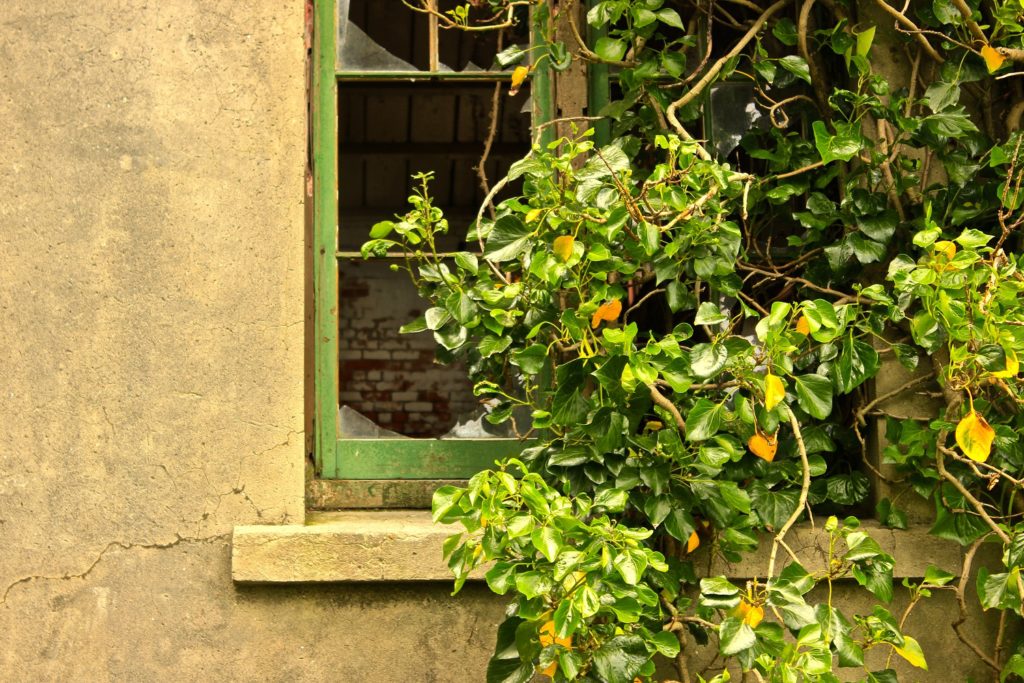
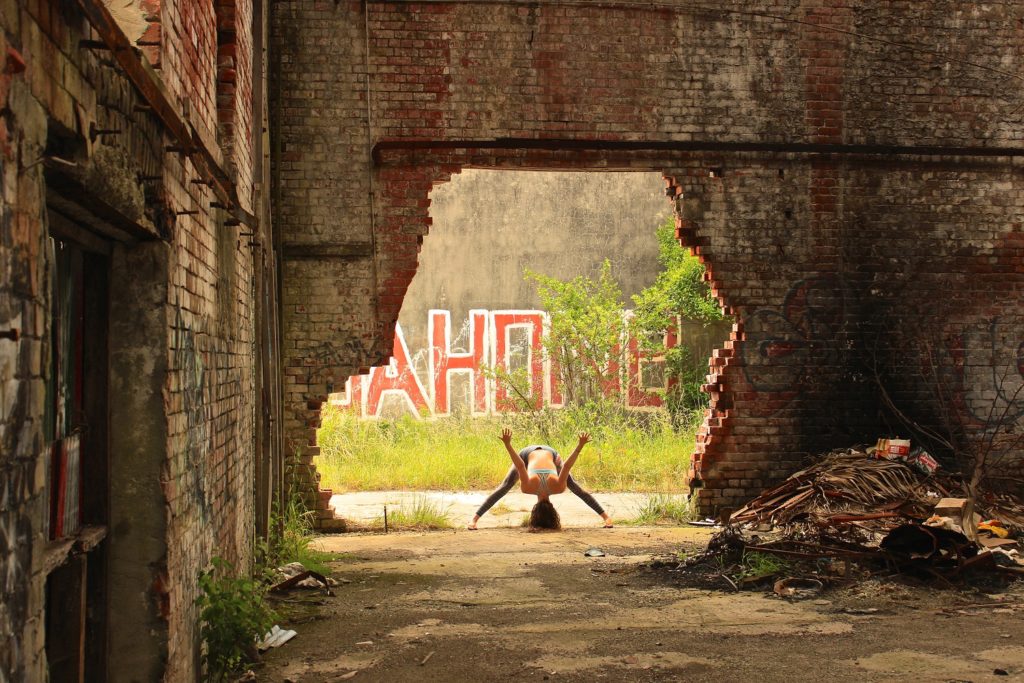
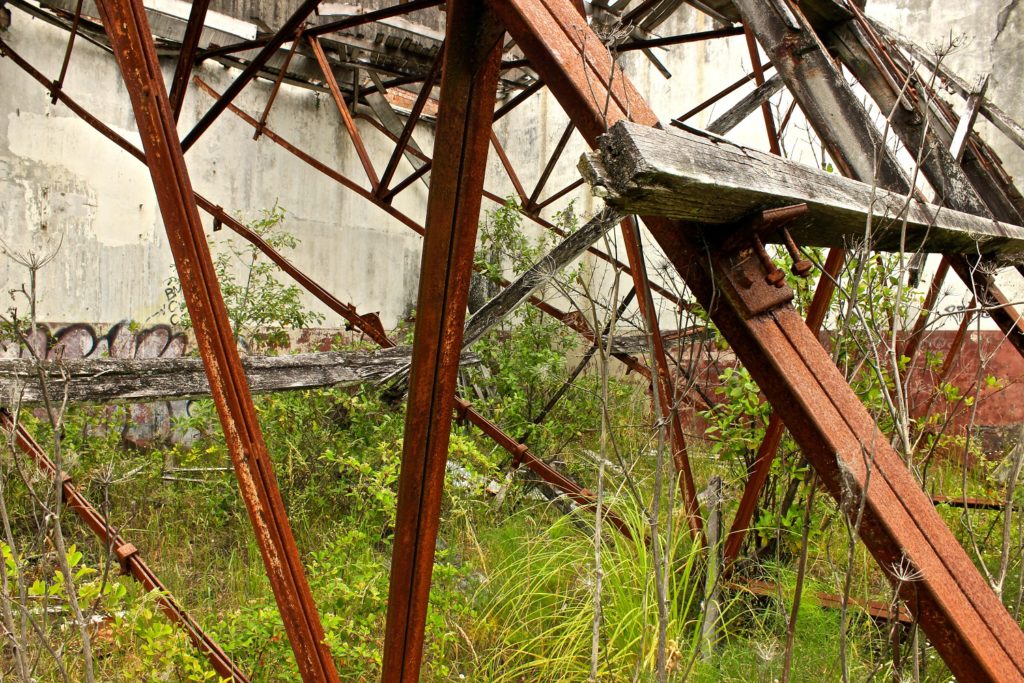
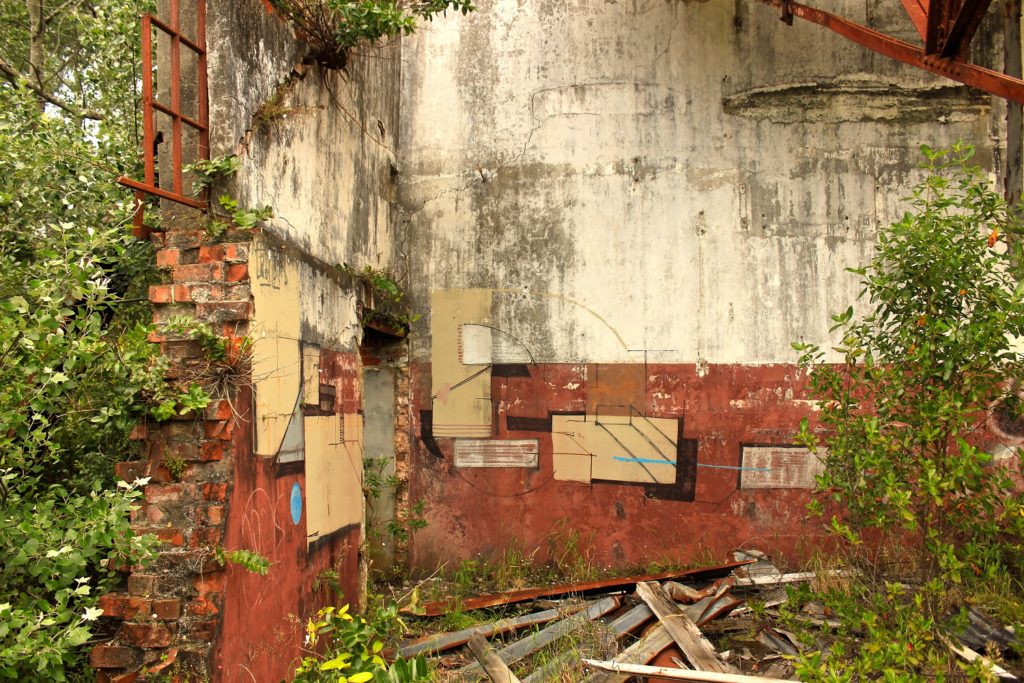


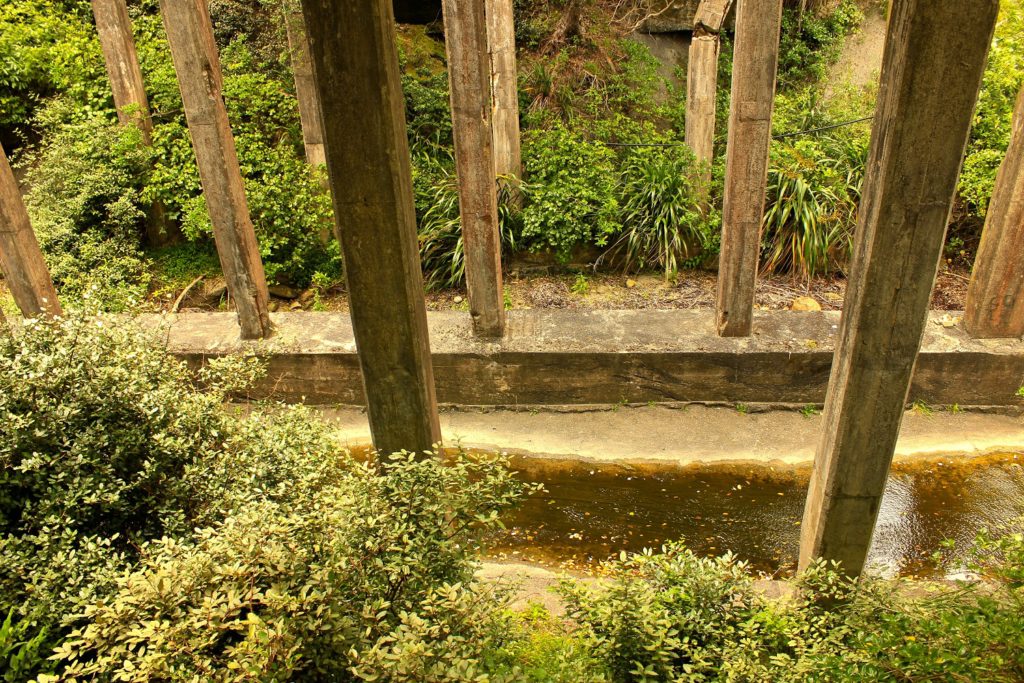
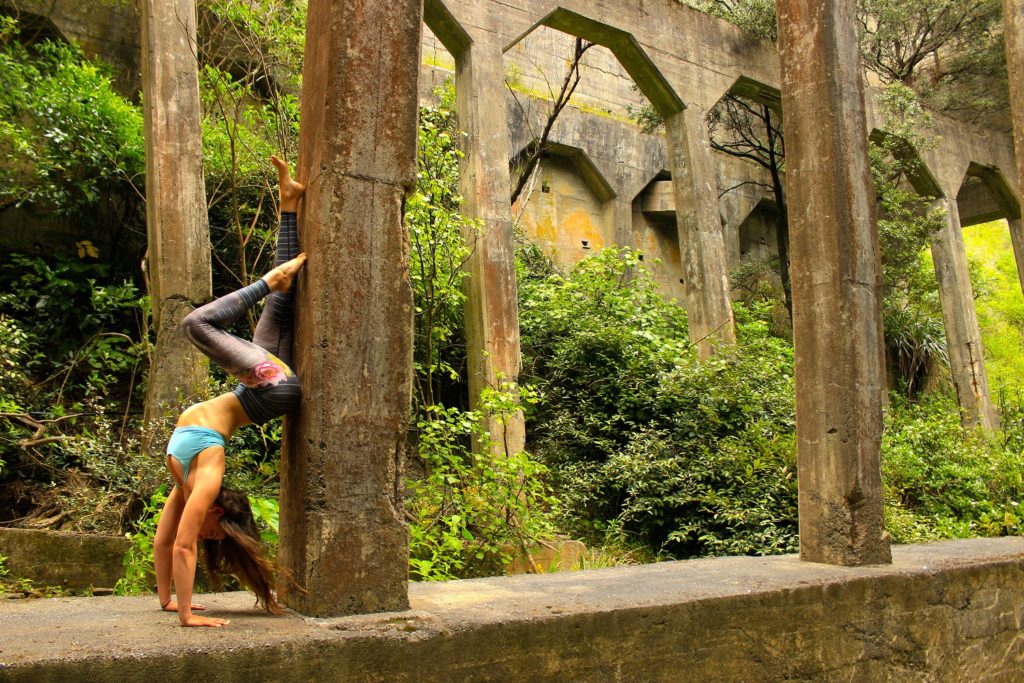
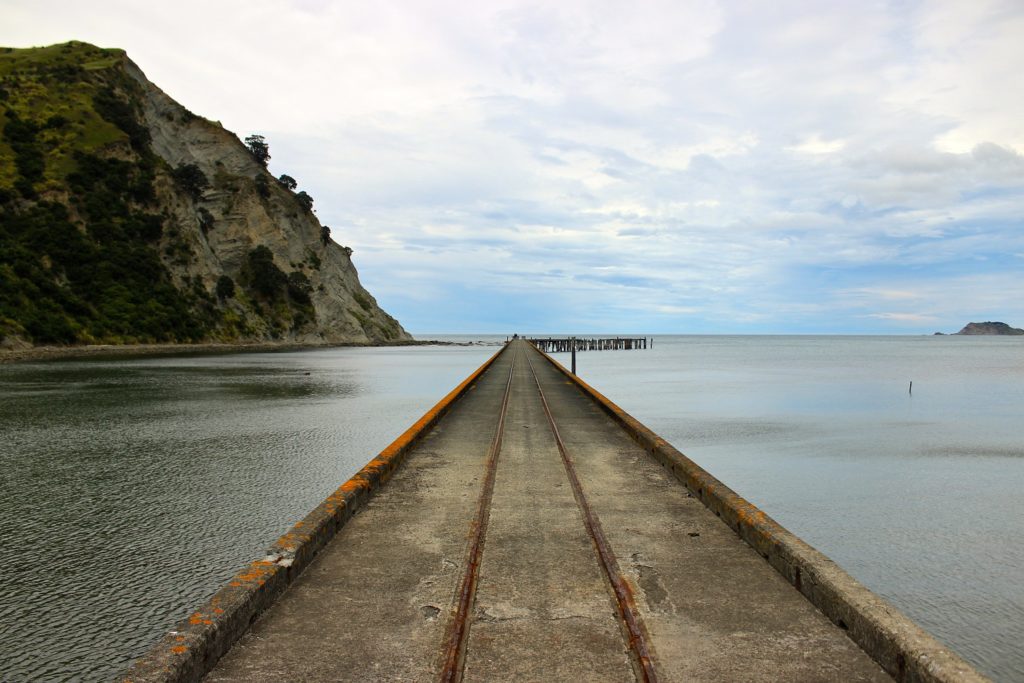
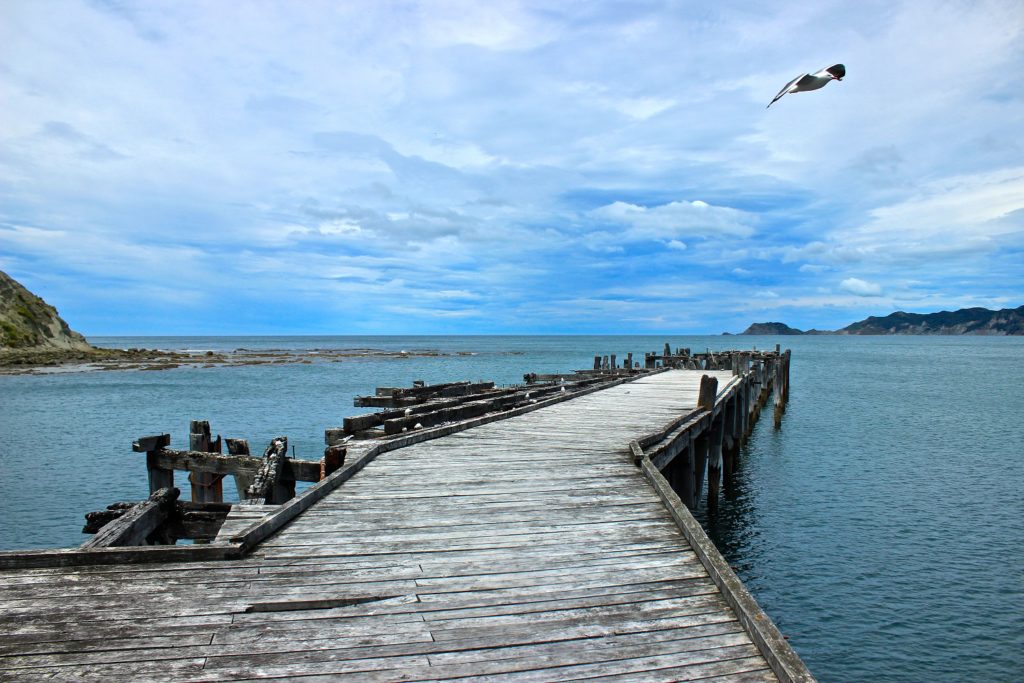



One comment
Interpreting a New Zealand Ghost Town through Yoga
Comments are closed.